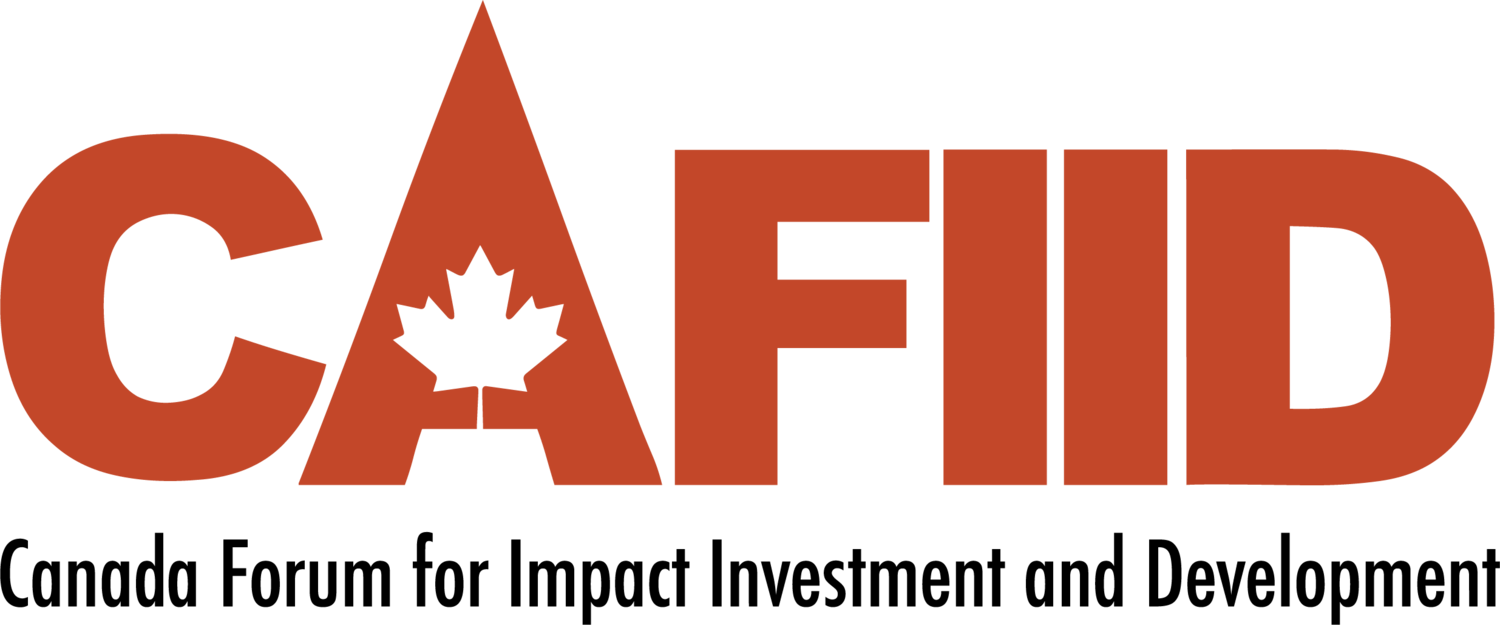Development Impact Bonds: Generating positive and measurable development impact
January 31, 2022
Author: Dr. Brian Carriere
Development Impact Bonds (DIBs) are outcomes-based innovative financial instruments designed to produce more efficient and impactful development projects by prioritizing the achievement of outcomes over outputs. DIBs and their closely related Social Impact Bond cousins are also referred to as impact bonds, pay-for-performance and results-based financing. DIBs are different from Social Bonds or SDG Bonds. Confused yet?
On September 22, 2021, CAFIID hosted a webinar titled Development Impact Bonds: Generating positive and measurable development impact. Colleges and Institutes Canada moderated a panel of thought leaders and experts from the Brookings Institution, Grand Challenges Canada and Social Finance UK. The objective of the event was to answer questions on the DIB model including what are they, the rationale for choosing a DIB over traditional funding for international development projects, emerging trends in the DIB market and the evidence supporting their early success in achieving social outcomes at scale.
What is a Development Impact Bond anyway?
The webinar started with a basic question. What is a DIB anyway? A DIB is a new way of funding international development projects. A DIB is simply a set of contracts between a donor agency, an investor, and a service provider. The contracts state that the donor agency will make payments to the investor if – and only if – the development project succeeds in delivering pre-agreed social outcomes. At this level, a DIB is essentially a new form of public-private partnership.
But beyond the contractual mechanics, an impact bond is fundamentally about a new way of working in development assistance. It’s an approach that brings multiple parties together, with each party working in a way that suits its strengths:
Source: Social Finance UK
A donor agency, acting as an outcomes funder, who seeks to maximize the social impact of its scarce funding resources.
A socially-oriented investor, who seeks both to have positive social impact but also a return of its capital to re-invest again in the future.
A service provider who seeks constantly to adapt and to innovate in its delivery of projects for the maximum benefit of the populations it works with.
Independent validator who verifies the social outcomes have been achieved.
The rationale for choosing a Development Impact Bond
A DIB changes the behaviour of all actors in a funding relationship and ensures they are aligned around social impact. A DIB contrasts with traditional aid projects in that it:
provides a space for novel partnerships.
integrates accountability for results.
establishes sharp and shared incentives to achieve impact.
Allows room for service providers to innovate.
requires rigorous data collection and analysis.
allows for adaptive implementation.
The process of putting together a DIB ensures clarity and realism on what can be achieved. It aligns all partners around a shared social goal. With investors providing the working capital for the project delivery, importance is placed on the collection and analysis of data, but it also allows room for service providers to innovate and respond to what’s happening on the ground in real time.
For example, the Cameroon Kangaroo Mother Care Development Impact Bond
Grand Challenges Canada (GCC) describes itself as one of the largest impact-first investors in Canada. It was an investor in the Cameroon Kangaroo Mother Care Development Impact Bond. The DIB aimed to save and care for over 950 infants by providing Kangaroo Mother Care in up to 10 hospitals in Cameroon.
GCC chose a DIB because of its interest in innovative financial instruments and in scaling a pilot project it had funded in Columbia, Mali and Cameroon. The pilot produced evidence of the effectiveness of Kangaroo Mother Care (KMC) saving the lives of premature and low birth weight babies. GCC acted as an investor and provided the upfront working capital for the DIB. It partnered with:
Ministry of Public Health, Cameroon (drawing on funds from the Global Financing Facility) and Nutrition International acting as the outcomes funders.
Kangaroo Foundation Cameroon acting as the service provider.
Institut pour la recherche, le développement socio-economique et la communication (IRESCO) acting as the independent validator.
Social Finance UK and the MaRS Centre for Impact Investing to design the DIB and for performance management support.
Cameroon Kangaroo Mother Care DIB Structure
Source: Grand Challenges Canada
GCC found that the DIB produced a different level of engagement with all stakeholders compared to other projects it funded. All stakeholders convened regularly throughout the project to address different challenges. Adaptive implementation was a key driver of success for the provision of KMC especially during the COVID-19 pandemic. The DIB also allowed for the integration of best practices emerging during the implementation of the intervention.
In terms of results, expectations were exceeded in that the predetermined outcomes were surpassed. Over 1220 babies received quality KMC. Moreover, 80% of the infants were exclusively breastfed and 80% of babies returned for follow up and showed appropriate weight gain at gestational age. Given the close involvement of the Government of Cameroon and the Global Financing Facility, the DIB led to engagement with the World Bank Group, and to a high likelihood of sustainable funding for KMC in Cameroon.
What about the global landscape?
The global landscape of impact bonds has changed significantly since the world’s first impact bond was implemented to reduce reoffending in the city of Peterborough just over a decade ago. There are now 214 impact bonds having been implemented in 35 countries with 19 of these in developing countries. The impact bonds contracted in developing countries have focused on addressing complex issues in the following sectors: health (6), education (3), employment (6), agriculture (2) and social welfare (2).
The impact bond market has grown significantly; however, questions remain around if impact bonds are achieving results. When impact bonds are analyzed in terms of investor repayment, there is clear evidence that they are. The Brookings Institution has found that out of 49 completed impact bonds, investors have been repaid their principal plus a return in all but one. What about the so-called impact bond effect? Here again, the evidence is strong. Impact bonds produce positive and measurable social impact, promote a culture of monitoring and evaluation, encourage more adaptive performance management, foster innovation, lead to novel partnerships and incentivize collaboration.
Less clear is how impact bonds compare to traditional funding mechanisms for efficiently and effectively generating impact in development projects. The Brookings Institution argues that business as usual has not moved the needle on large complex development challenges and that enough anecdotal evidence points to service delivery being changed for the better. Take a look at this Brookings Institution brief on whether impact bonds are an efficient and cost-effective way of financing service delivery. While more research is needed, early evidence does point to the impact bond model fulfilling some of the promises made when launching the first impact bond over a decade ago.
Author: Dr. Brian Carriere is the Chair of the CAFIID Thought Leadership Committee and a Senior Program Officer, Social Innovation and Impact Investing at Colleges and Institutes Canada.


